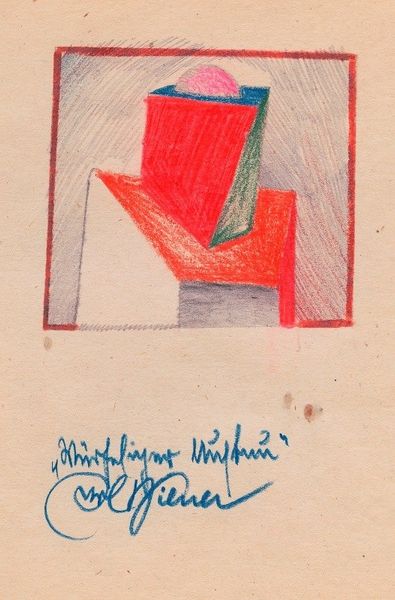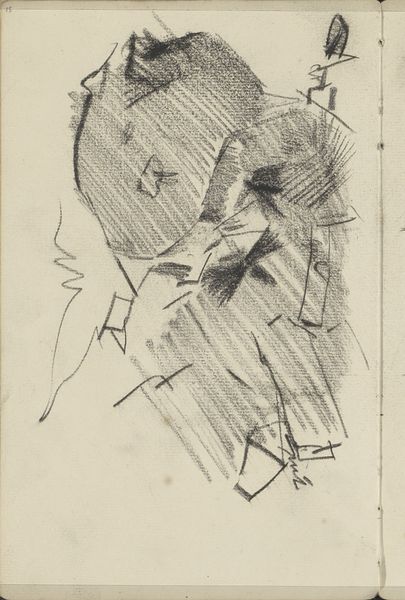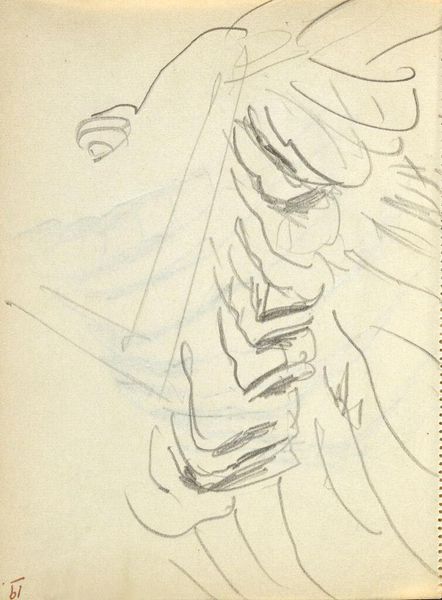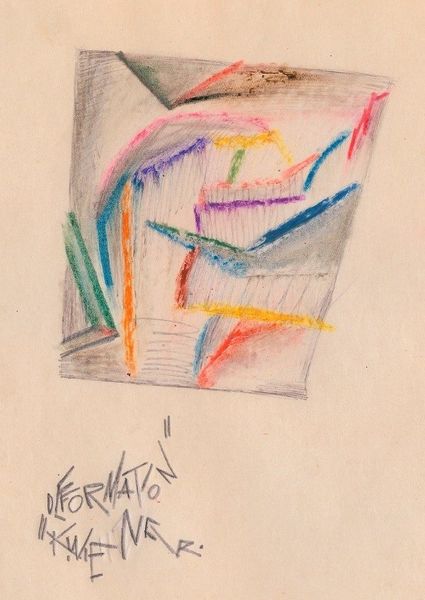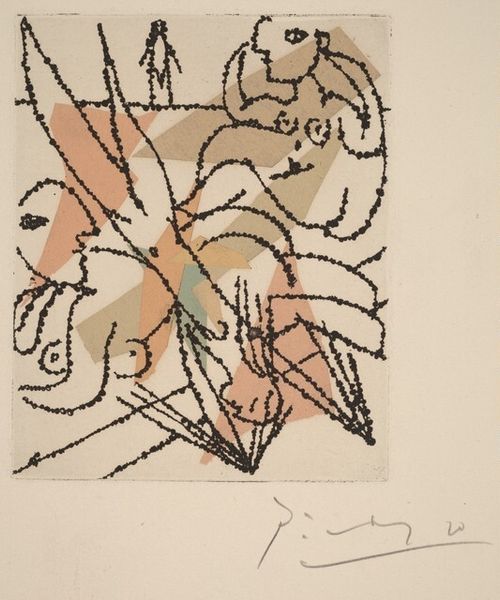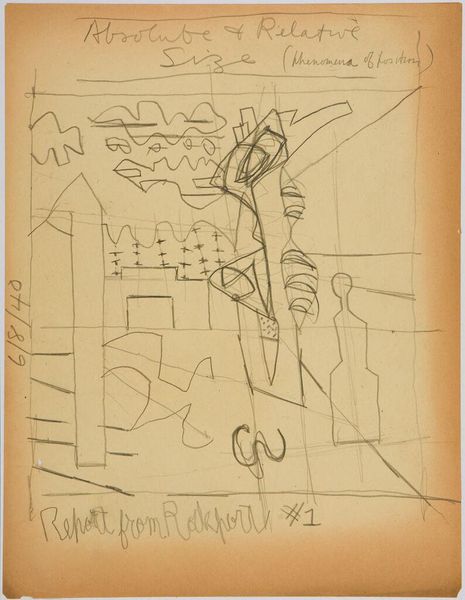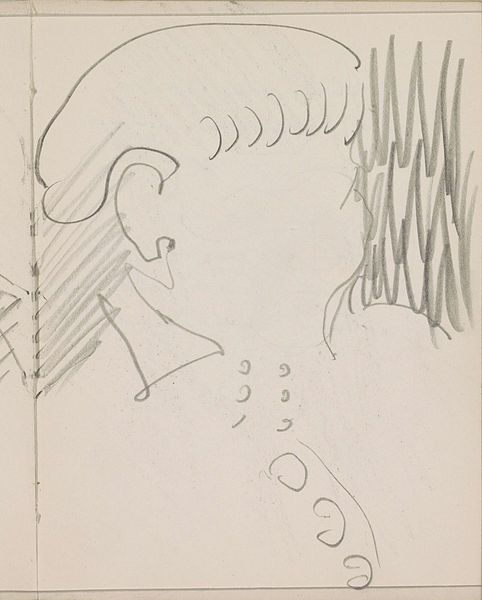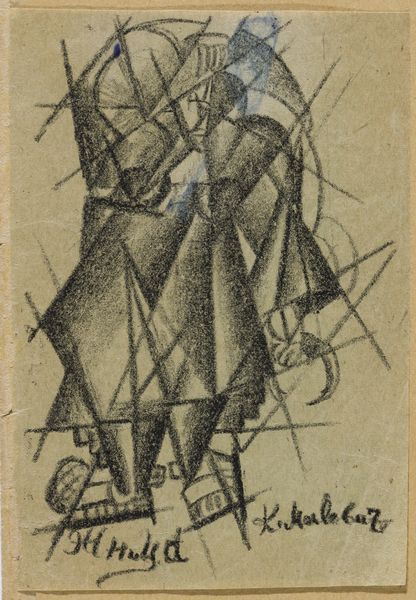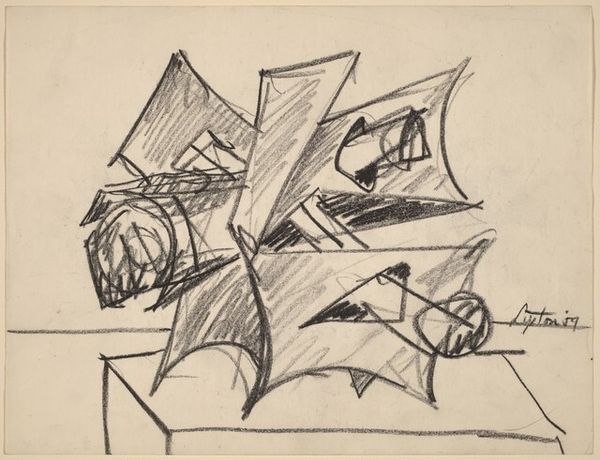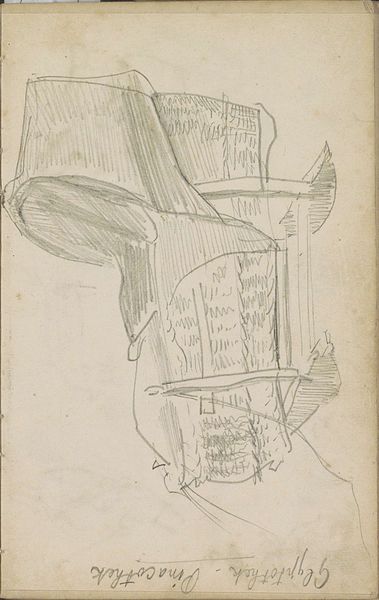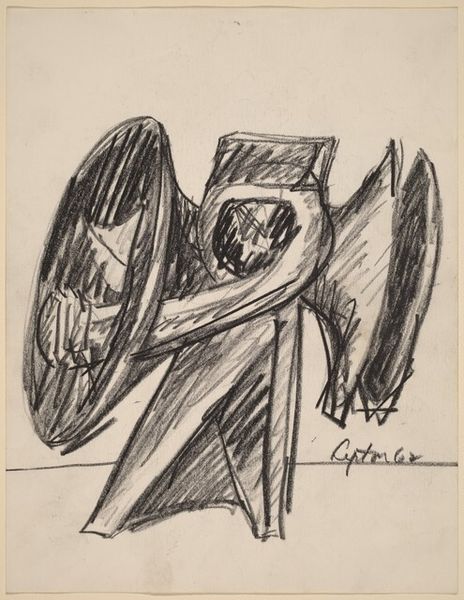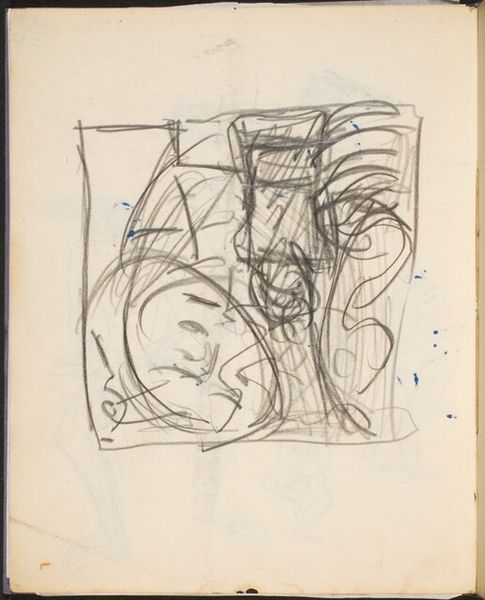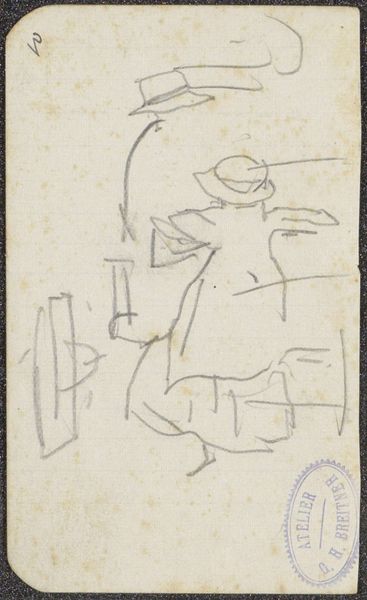
drawing, coloured-pencil
#
drawing
#
coloured-pencil
#
abstract
#
coloured pencil
#
expressionism
#
abstraction
Copyright: Public Domain: Artvee
Editor: This is "Komposition; Felsen und Wolken", or "Composition; Rocks and Clouds" by Karl Wiener, around 1923. It’s a coloured-pencil drawing, and there’s something really arresting about the fragmented shapes and the bold color choices. It makes me wonder about the artist's intentions... what's your read on this work? Curator: It's interesting how Wiener, amidst the socio-political anxieties of post-World War I Europe, uses abstraction. Instead of realistic landscapes, we see fractured forms. How do you think this reflects the public sentiment towards landscape art at the time? Was it just escapism, or was something more happening? Editor: I suppose representational landscapes might have felt… irrelevant, even insensitive? These shattered forms maybe speak to the brokenness felt throughout society? Curator: Precisely. Also consider how institutions at the time might have responded to such work. Expressionism, with its intensely personal viewpoint, was starting to gain traction, but how readily would the traditional art establishment have embraced such a deconstruction of the natural world? Did abstract art like this provide a visual language for this widespread disillusionment? Editor: That's a perspective I hadn't fully considered! The fragmented nature mirroring social fragmentation… it’s quite powerful. Did the rise of psychoanalysis have an influence here as well, this focus on inner turmoil? Curator: Undoubtedly. The art world, influenced by figures like Freud, explored the inner landscape as deeply as the external. Consider, too, that the use of colored pencil--typically considered a medium for preparatory sketches--may have served to intentionally de-emphasize formal traditions. A direct rejection of artistic rules for Wiener. What are your thoughts now, knowing this background? Editor: I think it reframes my whole understanding of it! It's no longer just a landscape, but a cultural artifact, speaking volumes about its historical moment. It's like looking at a visual time capsule. Curator: Exactly. That contextual awareness is crucial for art historical inquiry.
Comments
No comments
Be the first to comment and join the conversation on the ultimate creative platform.
